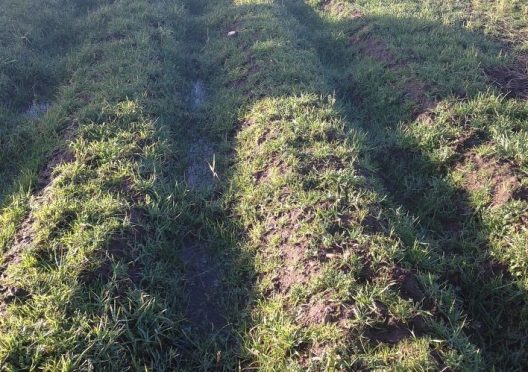Farm-specific “agrobot” robots and the latest scientific innovations in precision farming and eco-engineering were unveiled at an open day on the James Hutton Institute’s (JHI) Balruddery farm on the outskirts of Dundee.
But it was a practical “magic margins” solution to soil erosion devised by the Institute’s own farm staff which captivated around 80 of Scotland’s most progressive farmers.
JHI’s head of farms, fields and glasshouses, Euan Caldwell demonstrated how a tied ridger machine – designed to create small dams to hold irrigation and rainwater on sloping fields – can be employed on field margins to prevent soil and nutrients being washed off steep or sloping fields.
“Back in 2012 we decided as farm staff that we needed to do more as a Linking Environment and Farming (LEAF) innovation centre to protect our soil,” he said.
“Initially we thought about trying buffers at the bottom of steeper fields using a potato drill plough but we quickly realised water would reach the first drill then migrate across them and create a pond.”
Instead the staff employed a combination of potato drill ploughs and the tied ridger and created 6 metre wide field margins on the most vulnerable fields.
“The idea was the water would be held all the way and we were amazed at how effective it was so we’ve now replicated the margins all the way round both our arable farms. We’ve sown wild grass and some wild bird seed and flower mixes and they make up part of our Environmental Focus Area and once they’re fully established no-one sees the hidden added value (of the ridges). It just looks like any other field margin,” said Mr Caldwell.
The deep, bumpy ridges have had other benefits too as they discourage anyone driving on the field margins and have helped discourage illegal hare coursing.
“We’ve had an ongoing and historic hare coursing problem and in the past criminals have used off road vehicles to drive round the margins to flush out hares to then let their dogs chase them,” said Mr Caldwell.
JHI new chief executive, Professor Colin Campbell, toured the science sites alongside farmers and said the industry had never been offered so many different types of innovation to help it through environmental challenges. And he added there was huge potential to commercialise new understanding of technology and get information out to farmers.
He said: “There’s a drive towards open science so the findings are open to every body to use. We might see new models in future in how we commercialise or get knowledge out to people much better than we ever did before.”
